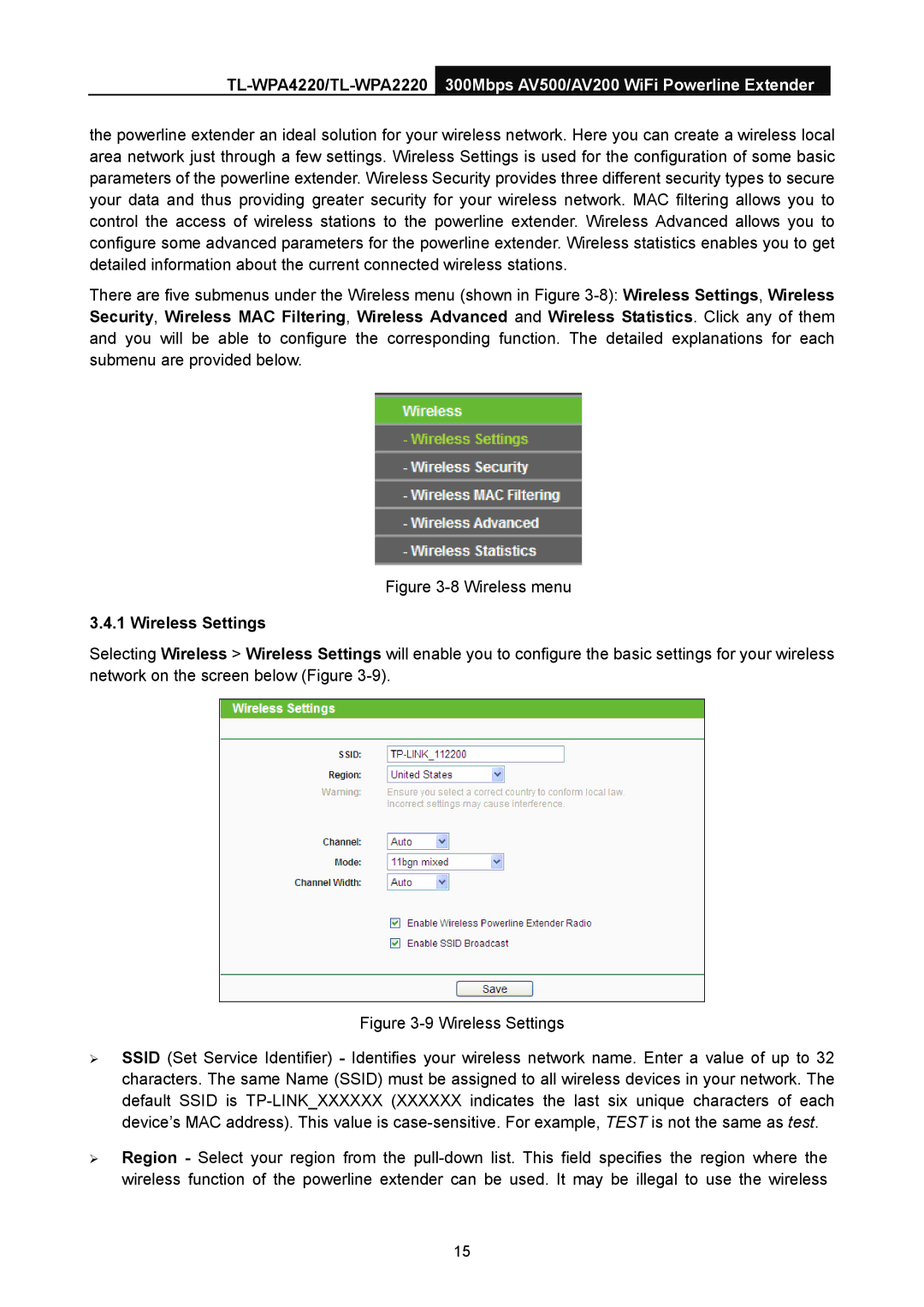
the powerline extender an ideal solution for your wireless network. Here you can create a wireless local area network just through a few settings. Wireless Settings is used for the configuration of some basic parameters of the powerline extender. Wireless Security provides three different security types to secure your data and thus providing greater security for your wireless network. MAC filtering allows you to control the access of wireless stations to the powerline extender. Wireless Advanced allows you to configure some advanced parameters for the powerline extender. Wireless statistics enables you to get detailed information about the current connected wireless stations.
There are five submenus under the Wireless menu (shown in Figure
Figure 3-8 Wireless menu
3.4.1 Wireless Settings
Selecting Wireless > Wireless Settings will enable you to configure the basic settings for your wireless network on the screen below (Figure
Figure 3-9 Wireless Settings
¾SSID (Set Service Identifier) - Identifies your wireless network name. Enter a value of up to 32 characters. The same Name (SSID) must be assigned to all wireless devices in your network. The default SSID is TP-LINK_XXXXXX (XXXXXX indicates the last six unique characters of each device’s MAC address). This value is case-sensitive. For example, TEST is not the same as test.
¾Region - Select your region from the pull-down list. This field specifies the region where the wireless function of the powerline extender can be used. It may be illegal to use the wireless
15
